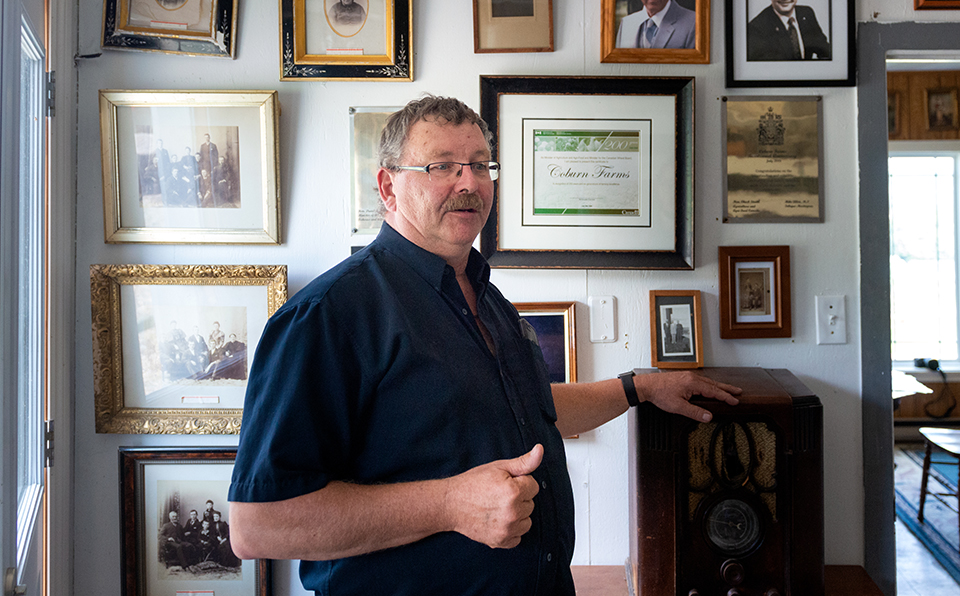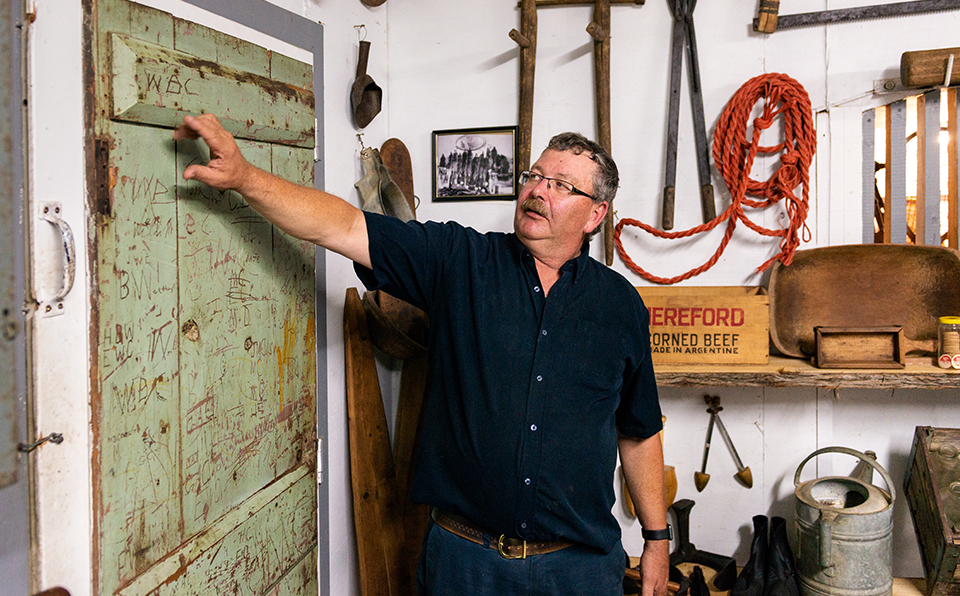
This family museum documents 200 years of farming history
By Egg Farmers of CanadaHe’s the eleventh person in the Coburn family to carry the name David, and 2018’s David Coburn wants to preserve the history of the first ten.
So, David did something extraordinary: he built a museum documenting his family’s 200-year history farming in Keswick Ridge, New Brunswick.

It sounds like an impossible task—how to document six generations of farmers?—but as David says, “when you live in one place for 200 years, you collect a lot of stuff!”

That’s no overstatement. The Coburn museum is an eclectic collection of artifacts, some of which a national museum would envy. We expect grand narratives from national museums, but the Coburn museum offers an unexpectedly grand narrative from an unexpected place—the history of Canadian agriculture, found in the history of one Canadian family.
That history begins with the first David Coburn. He came to Keswick Ridge in 1803, bought the Coburn land in 1806, and in that same year built a house that stands to this day. He leaves behind a remarkable legacy, including tales that at times read like an Indiana Jones movie.

Coburns tend to find adventure when they leave the farm. Take Benjamin Coburn. He attended Harvard Medical School and then served in the American Civil War. He survived and returned to Keswick Ridge to start a medical practice—and the Coburn family museum is home to the canteen he carried during the war.
Yet another crop of Coburns bought a schooner to join the California gold rush. The three were caught in a hurricane off the coast of Brazil and crashed while sailing towards the tip of South America. That crew eventually settled on the west coast, and their descendants travelled to the Coburn family’s 200th anniversary celebration a few years ago.

The Coburns even hold a little place in the history of agriculture in Canada. David has a framed photo of Eugene Whelan on the Coburn farm. That image was published in newspapers across the country. It was Whelan who created the system Canadian egg farmers celebrate today—a system which offers consumers a consistent supply of fresh, local eggs and has enabled generations-old family farms like the Coburns to survive for generations more.

That’s what makes the Coburn family farm museum so remarkable: it’s a microcosm of a bigger story. It’s about the Coburn family, but it’s also about Canada. The existence of multi-generational farms like the Coburn’s are an extraordinary inheritance worthy of protection. Thanks to supply management this great Canadian story—the story of the Coburn family—will continue, with plenty more stuff added to this family museum in years to come.